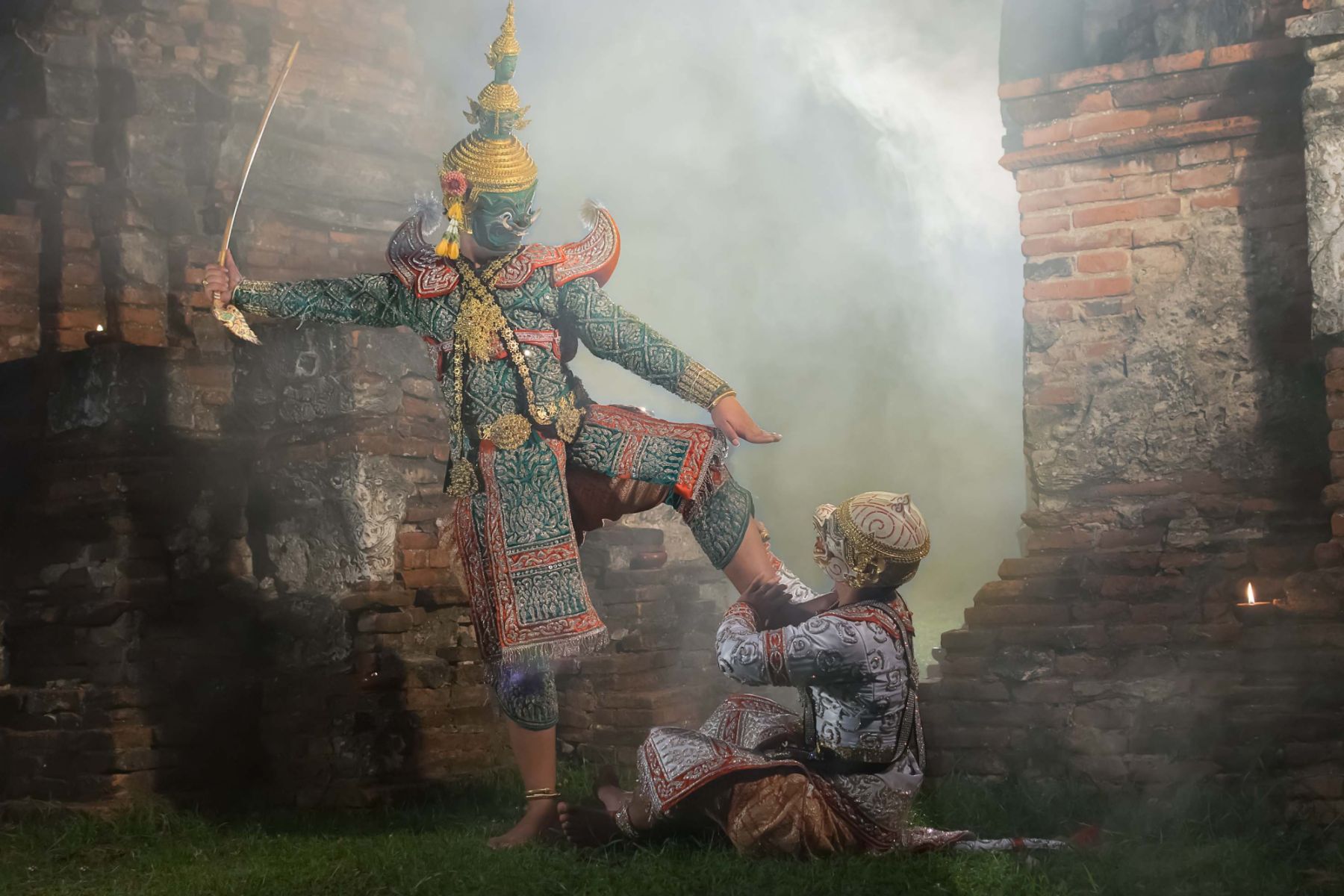The renowned Thai dancer and master of Khon tells Tatler how he’s transforming the spirit of Khon to a contemporary context
In the days of the internet and social media, it’s not so easy keeping a traditional art form going. Pichet Klunchun knows this first hand. The Thai dancer is one of the country’s greatest masters of Khon, who is also keeping the dance drama genre alive. Khon dates back to the Ayutthaya Kingdom and is one of Thailand’s crowning and scared artistic treasures that combines various elements including dance, drama, music, poetry and shadow play into an art form.
Traditionally performed in royal courts by men in masks, Khon is seen by many, particularly the younger generation, as a thing of the past. Kluchun is one of the few that’s still unwavering in keeping it alive, having learned the dance since he was 16 years old. He has since gained notoriety for his boundless dedication to the craft and has performed it numerous times both in his home country and overseas. Now he’s bringing it to Hong Kong through the Tai Kwun Spotlight.
Aiming to create an understanding of a resurgence from the young generation for Khon, Kluchun worked on No.60, which is a culmination of 20 years of work and research. For the performance at Tai Kwun called No.60: Back to Basics, he leads four Hong Kong dancers from different disciplines in training to transform the spirit of Khon to a contemporary context. Ahead of the performance from October 7–10, Tatler catches up with the maverick artist to learn more about Khon and his role in developing it for future generations.
Don’t miss: South Korean Soprano Rim Sae-Kyung: "My Hong Kong 'Madama Butterfly' Performance Will Be the Best Ever"


What’s special about Khon?
Khon is special because it is a form of performing art that we can do research about its past in many aspects such as from political point from Monarchy to democracy, religious belief, music, costume, painting, drawing, the relationship between neighbouring countries by Ramayana story. I am very interested in how Khon will adjust itself to the “digital world” in this present time.
How would you summarise your experience choreographing this dance for Tai Kwun Spotlight?
The work among myself as a choreographer, with dancers who are looking for their own identity and the 59 diagrams of Theppanom cannon.
What do you want to showcase through this dance?
I want to share that the traditional art form contains core knowledge that is tangible and can be put in the process of creating work with the scientific approach.
Read also: Rising Ballet Dancer Amber Lewis Talks About Her Life On and Off Stage








